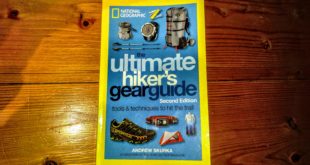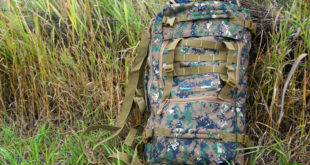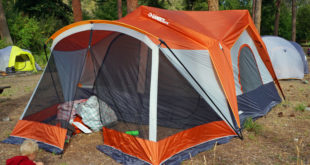Over the past few weeks here in Bolivia I’ve been eying the backpacks. Most are a pretty decent deal at around $95 with the potential of knocking off another $15 by bartering alone. However, when I noticed that one of the embroidered logos wasn’t straight I got in contact with the manufacturer. After a couple emails an some photos he confirmed my suspicion. It was counterfeit… they all were.
 Don’t expect to save a ton of money either. Everything that I saw was priced between $50-$150 for rain and winter jackets and $90 to 200 for backpacks. Why so much? We’re not talking about cheap imitations, we’re talking about branded gear with fancy hangtags that could pass for the real thing… at least in looks. They leverage the fact that they look pretty good on first inspection and that it bears a name brand.
Don’t expect to save a ton of money either. Everything that I saw was priced between $50-$150 for rain and winter jackets and $90 to 200 for backpacks. Why so much? We’re not talking about cheap imitations, we’re talking about branded gear with fancy hangtags that could pass for the real thing… at least in looks. They leverage the fact that they look pretty good on first inspection and that it bears a name brand.- Know the manufacturer’s product line. Petzl’s problem is more of an exception. Most knock offs borrow the brand, but their products look different or have different names. I came across a Deuter ACLANTIC (Christian Lechelmayr, International Sales Area Manager for Deuter says they don’t produce a model with that name). I also came across a Trans Alpine (yes, it is a real model name) but with a 55 liter capacity (they only make up to 30L).
- Buy from a reputable dealer. Go online and find out who the official distributors are. All gear (unless bought through closeouts) should be sold through distributors listed on their website.
- Examine the stitching and labels. Often the labels or stitching are clearly of inferior quality. Several times I’ve come across spelling mistakes in the labels and hangtags.
- Watch out for online auctions. This is pretty standard, but do your research. Who is selling this? Why? Where did he get it? Is it a realistic deal?
- Contact the manufacturer with photos. They will be happy to help you out and know their product lines. (Deuter told me that their hangtags were completely different).
| The Real Deuter Trans Alpine (unlike the copy to the right) |
 I
I might have bought a pack if the name was different, but blatant counterfeiting just doesn’t float my moral boat. Although these photos are of deuter branded packs, I encountered in the same store counterfeits of the North Face, Lowe Alpine, and more.
After speaking with a worker there I found out that your only safe bet is Doite (a chilean company), High sierra, and some Columbia gear (that will stick out by price). The rest are just copies.
That said, there are some local Bolivian brands that produce decent quality clothing for a very low price! The quality is the same but because they don’t borrow the logo, you should be able to save a lot more money.
 The Outdoor Adventure Giving you tips, tricks & recommendations to help make adventuring in the Outdoors fun, safe & exciting for you and your kids.
The Outdoor Adventure Giving you tips, tricks & recommendations to help make adventuring in the Outdoors fun, safe & exciting for you and your kids.







